Overview
The essential features of an IR spectroscopy machine are pivotal for laboratories aiming for precision and reliability. These features encompass:
- High-resolution spectral information acquisition
- Advanced data acquisition systems
- Versatile sample interfaces
- Sensitive detectors
- Precise optical components
- Robust calibration capabilities
- Sophisticated data analysis software
- User-friendly interfaces
- Portability
- Comprehensive maintenance support
Each of these elements plays a crucial role in enhancing analytical capabilities, accuracy, and usability. Consequently, the IR spectroscopy machine emerges as an indispensable tool across various fields, including pharmaceuticals and environmental monitoring. By understanding the significance of these features, laboratories can make informed decisions that elevate their analytical performance.
Introduction
In the realm of scientific research, precision and reliability are paramount. The JM Science IR Spectroscopy Machine stands at the forefront of this analytical revolution. With its advanced capabilities designed for meticulous molecular structure analysis, this sophisticated instrument is transforming how laboratories approach chemical analysis and medical diagnostics.
As the demand for high-resolution spectral data continues to rise, the machine's innovative features—from its state-of-the-art data acquisition system to its versatile sample interface—are setting new standards in the field.
This article delves into the multifaceted components of the JM Science IR Spectroscopy Machine, exploring how each element contributes to its exceptional performance and the critical role it plays in advancing research across various industries.
JM Science IR Spectroscopy Machine: Advanced Analytical Capabilities
The JM Science ir spectroscopy machine stands at the pinnacle of analytical technology, meticulously engineered for precise molecular structure analysis. The ir spectroscopy machine's capability for high-resolution spectral information acquisition is essential for accurately identifying functional groups across a wide array of samples, rendering it an invaluable asset for laboratories engaged in chemical analysis and medical diagnostics.
As we look towards 2025, the trend of enhancing spectral resolution is gaining momentum, with industry leaders underscoring the necessity of high-resolution data for reliable chemical analysis. Recent studies reveal that the robust principal component analysis-alternating conditional expectation (rPCA-ACE) model achieved an impressive calibration of 0.838, highlighting the significance of advanced evaluative techniques in this domain.
Furthermore, expert opinions emphasize that significantly enhance evaluative capabilities, empowering laboratories to extract more precise insights from their data. The real-world applications of high-resolution spectral data acquisition are evident across various fields, including pharmaceuticals and environmental monitoring, where precise measurements are paramount.
A noteworthy case study, 'Airborne Measurements of Directional Reflectivity Over the Marginal Sea Ice Zone,' exemplifies how advanced IR spectroscopy can improve atmospheric parameter retrieval methods, showcasing the machine's potential in intricate analytical scenarios.
As JM Innovations continues to push the boundaries of this technology, the ir spectroscopy machine remains a cornerstone for laboratories striving for excellence in scientific research.
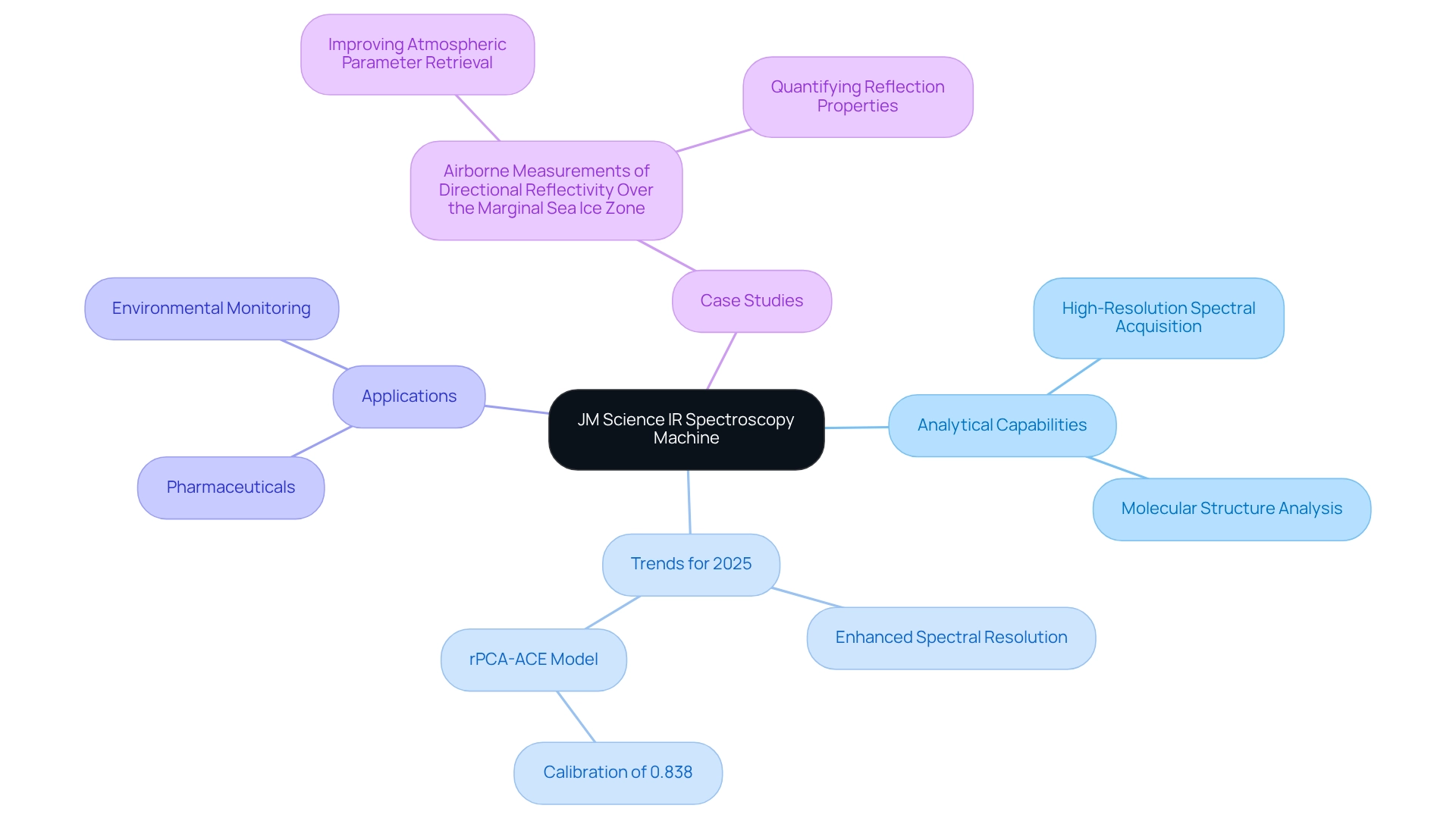
Data Acquisition System: Ensuring Accurate Spectral Data Collection
The information acquisition system in the ir spectroscopy machine from JM Science is meticulously designed to provide high fidelity in spectral collection. By employing sophisticated algorithms, it effectively minimizes noise, significantly enhancing signal clarity—an essential factor for accurate spectral interpretation. This system supports various sampling methods, offering flexibility in experimental configurations and ensuring users can attain accurate information across diverse applications.
Recent advancements in spectral information collection technology have underscored the critical importance of noise reduction. Research indicates that Kappa values for information reliability can vary from 0.04 to 0.13, highlighting the inconsistency in quality across various systems. These values hold particular significance when assessing the performance of the ir spectroscopy machine from JM Science against industry benchmarks, as lower Kappa values may suggest less dependable information gathering.
Expert insights emphasize that reducing noise is crucial for enhancing the precision of spectral information collection. observes, "The chosen days are marked by the dates listed beneath their medians, and the case number is represented by the symbols surrounding the date," underscoring the importance of accurate information interpretation in spectral analysis. Even minor fluctuations can lead to significant discrepancies in results, making noise reduction a priority in research environments.
Furthermore, the incorporation of sophisticated algorithms has demonstrated notable improvements in the precision of spectral information gathering in laboratories. For instance, algorithms employing machine learning methods can adaptively filter noise and enhance signal detection, enabling researchers to focus on interpretation rather than correction. As the field of infrared spectroscopy continues to evolve, the capabilities of data acquisition systems remain a crucial element in ensuring dependable and exact results.
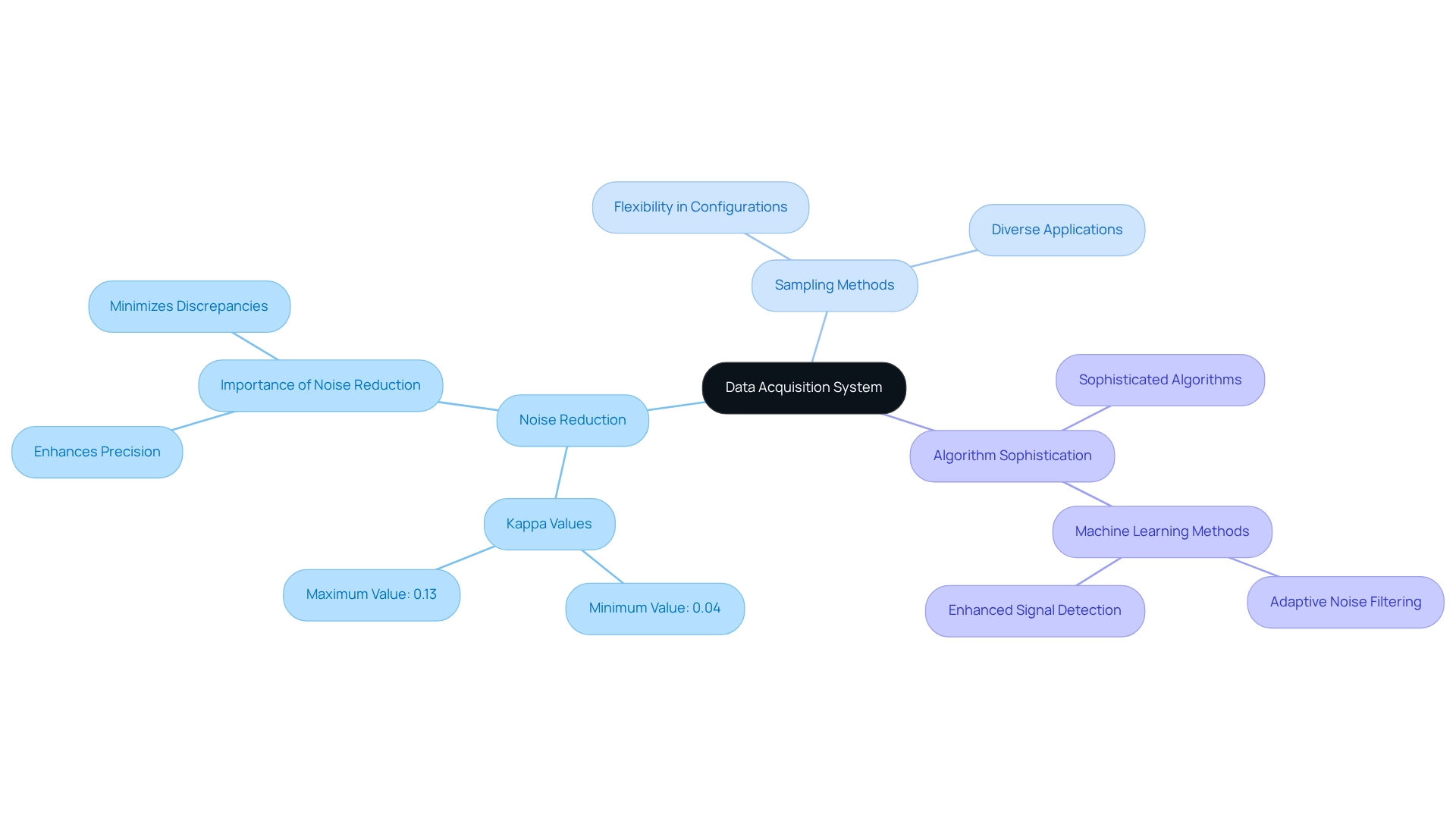
Sample Interface: Enhancing Measurement Quality and Versatility
The sample interface of the ir spectroscopy machine from JM Science exemplifies versatility, effectively accommodating a range of sample types, including solids, liquids, and gases. This adaptability is crucial for enhancing measurement quality, as it ensures optimal interaction between infrared light and the sample. Key features, such as adjustable path lengths and specialized sample holders, significantly improve the accuracy and reliability of measurements. This design not only supports routine analyses but also meets the demands of .
Innovations in sample interface design profoundly impact measurement accuracy. The integration of advanced materials and configurations allows for more precise readings across diverse sample types. Real-world examples, such as the successful measurement of pharmaceutical compounds in both solid and liquid states, demonstrate the ir spectroscopy machine's capability to effectively measure various states of matter, showcasing its utility in both academic and industrial settings.
Laboratory managers recognize the importance of measurement quality and versatility in their operations, emphasizing that a well-designed sample interface is essential for achieving reliable results. As Thompson et al. state, "The integration of IR spectroscopy into industrial processes is not merely about technology; it creates a comprehensive framework for informed decision-making." This highlights the broader implications of measurement quality in scientific research. Furthermore, the case study titled "Quality Excellence as a Habit" reflects the continuous nature of quality excellence, stressing that maintaining high standards in measurement quality is vital over time. As the domain of infrared spectroscopy progresses, the emphasis on adaptable sample interfaces remains a vital element in improving measurement capabilities and promoting a culture of quality excellence in scientific research.

Detectors: Key Components for Signal Conversion and Sensitivity
Detectors serve as pivotal components in an IR spectroscopy machine, profoundly affecting its sensitivity and accuracy. High-performance detectors are designed to convert infrared signals into electrical signals while minimizing noise, thereby facilitating the detection of trace amounts of substances. The selection of detector technology—ranging from thermal to photonic—is strategically aligned with the specific requirements of various applications, ensuring optimal performance across diverse evaluative scenarios.
Recent advancements in detector technology, exemplified by Osaka Soda's groundbreaking aerosol-based detector NQAD, have significantly enhanced sensitivity and selectivity, which are essential for applications such as trace analysis in pharmaceuticals and environmental monitoring. The NQAD employs proprietary technology to condense moisture on aerosol particles, enabling highly sensitive detection that surpasses traditional UV and MS detectors. This capability is particularly crucial in fields where meticulous monitoring of certain components is required, such as food safety and drug testing.
As Ricard Boqué astutely noted, "When a testing method is employed for trace analysis or in situations (i.e., food, drugs, doping substances,...) where the legislation demands the absence of certain components, the LOD must be estimated in a rigorous manner." The integration of high-performance detectors like the NQAD in the IR spectroscopy machine has been demonstrated to enhance measurement precision, as evidenced by case studies showcasing the effectiveness of bromide-selective electrodes in comparison to traditional colorimetric methods. These advancements not only bolster the evaluative capabilities of research facilities but also support more precise assessments in sectors such as precision agriculture, where soil health and fertilizer optimization are vital.
Moreover, exemplifies the application of advanced detection technology in drug and medicine testing, ensuring compliance with the Japanese Pharmacopoeia. The unique ability of IR light to penetrate only a few micrometers into the sample during ATR makes it particularly suited for studying surface properties, further underscoring the critical role of detector technology in these applications.
Expert insights consistently highlight that the sensitivity of detectors directly influences the overall performance of IR spectroscopy machines. As researchers persist in exploring innovative signal conversion technologies, the significance of detectors remains central to the advancement of analytical chemistry, ensuring that laboratories are equipped to meet the evolving demands of scientific inquiry. JM Solutions Inc.'s collaborations with leading brands such as Agilent Technologies and Thermo Fisher Scientific guarantee that the detectors provided are of the highest quality, reinforcing the reliability of the instruments employed in these essential analyses.
Optical Components: Directing and Manipulating Infrared Light
The optical components of from JM Science are engineered with precision, optimizing the manipulation of infrared light. High-quality mirrors, beam splitters, and lenses play an integral role in minimizing losses and maximizing throughput, which is crucial for achieving high-resolution spectra. The mechanical complexity of FTIR demands high precision and alignment stability for these optical components, underscoring their critical role in spectral resolution and the accurate identification of molecular structures and functional groups.
Recent advancements in [infrared light manipulation technology](https://sciencedirect.com/topics/earth-and-planetary-sciences/infrared-spectrometer) have significantly enhanced the performance of these systems, enabling more versatile applications in testing laboratories. For instance, the availability of optional detectors in FT/IR models, such as LN cooled PV/PC MCT detectors, illustrates how tailored optical setups can meet specific analytical needs.
As industry experts emphasize, 'Discover how Omega Optical can enhance your FT-IR spectroscopy capabilities using their IR spectroscopy machine,' highlighting that the excellence of optical components is not merely a feature but a fundamental requirement for reliable spectroscopy. This underscores the importance of ongoing quality enhancement in this field, aligning with JM's commitment to advancing research and healthcare through high-quality instrumentation.
Calibration Features: Ensuring Accuracy and Reliability in Measurements
The JM Science IR spectroscopy machine features advanced calibration capabilities that streamline regular maintenance and ensure measurement accuracy. These capabilities empower users to conduct self-calibrations and make adjustments using known standards, a crucial step in preserving data integrity. Regular calibration not only enhances the reliability of results but also extends the instrument's lifespan. Calibration frequency can vary, with schedules set annually, semi-annually, or quarterly, depending on the equipment's specific role in procedural processes. This proactive calibration approach can significantly boost profitability by enhancing revenue streams and reducing operational costs.
Furthermore, expert insights underscore the essential role of calibration in testing instruments. Mike Imholte, at Boston Scientific, emphasizes, "The significance of calibration can’t be overstated. Our testing tools and manufacturing processes must be accurate." Calibration services from industry leaders prioritize ensuring accuracy, repeatability, and consistency in laboratory testing, which are vital for successful outcomes. A case study involving METTLER TOLEDO illustrates how expert technicians deliver calibration services that minimize errors and maximize reliability. The integration of wireless calibration technology further enhances flexibility and mitigates the risk of errors for IR spectroscopy machines by eliminating cumbersome cables.
In conclusion, the calibration features in the IR spectroscopy machine not only bolster measurement reliability but also reflect a commitment to upholding high standards in analytical accuracy. Laboratory professionals stress the necessity of regular calibration for optimal performance. To implement effective calibration practices, lab managers should prioritize establishing a routine calibration schedule and consider adopting self-calibration techniques to further enhance measurement accuracy.
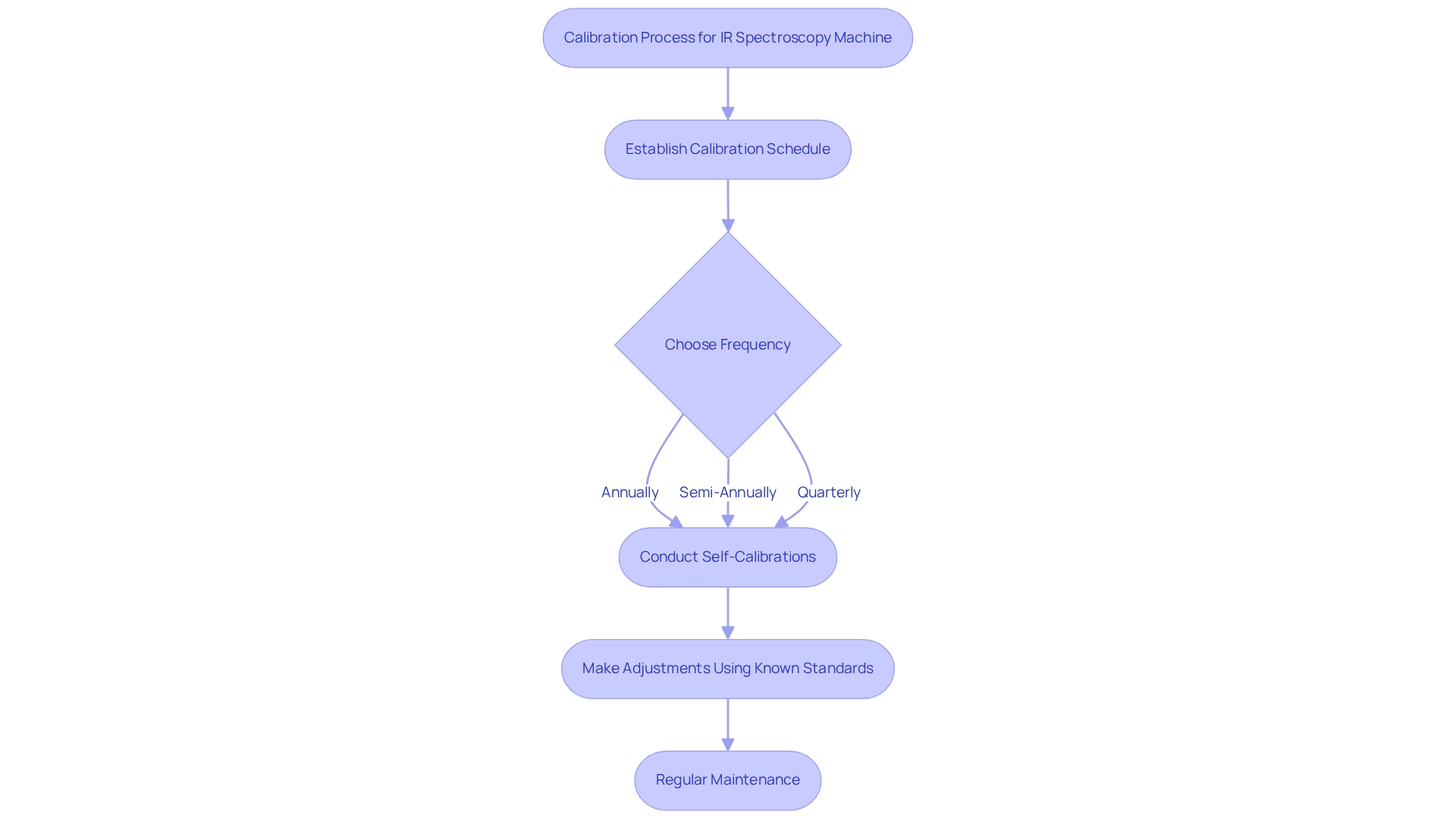
Data Analysis Software: Interpreting Spectral Data Effectively
The sophisticated analysis software enhances the JM Science IR spectroscopy machine, streamlining the interpretation of spectral information. This software provides users with essential tools for peak identification, quantitative analysis, and spectral comparison, enabling the extraction of significant insights from complex datasets. With its intuitive interface and advanced algorithms, the software ensures rapid and precise information processing, catering to both novice and experienced users.
Current trends reveal a robust growth trajectory for the global spectroscopy software market, projected to expand at a 9.1% CAGR from 2025 to 2034. This growth is fueled by increasing demand for information analysis and compliance, particularly within the pharmaceutical and petrochemical sectors. Notably, Saudi Arabia's commitment to enhancing its technological capabilities through initiatives like 'Vision 2030' is expected to further stimulate market growth.
As Tim O’Reilly aptly stated, "We’re entering a new world in which information may be more important than software," underscoring the critical role of information in contemporary analytical practices. The practical applications of this software demonstrate its effectiveness in laboratories, where the IR spectroscopy machine is an indispensable tool for interpreting spectral information. Users have reported high satisfaction levels with these information analysis tools, emphasizing their significance in achieving precise results. Moreover, leading players in , such as Agilent Technologies and Bruker Corporation, establish industry standards that JM aspires to meet and surpass.
As the field of spectroscopy continues to advance, the integration of innovative data analysis solutions is essential for propelling research and enhancing operational efficiencies across various scientific disciplines. JM's commitment to consistently refreshing its product range ensures that it contributes to progress within research and healthcare.
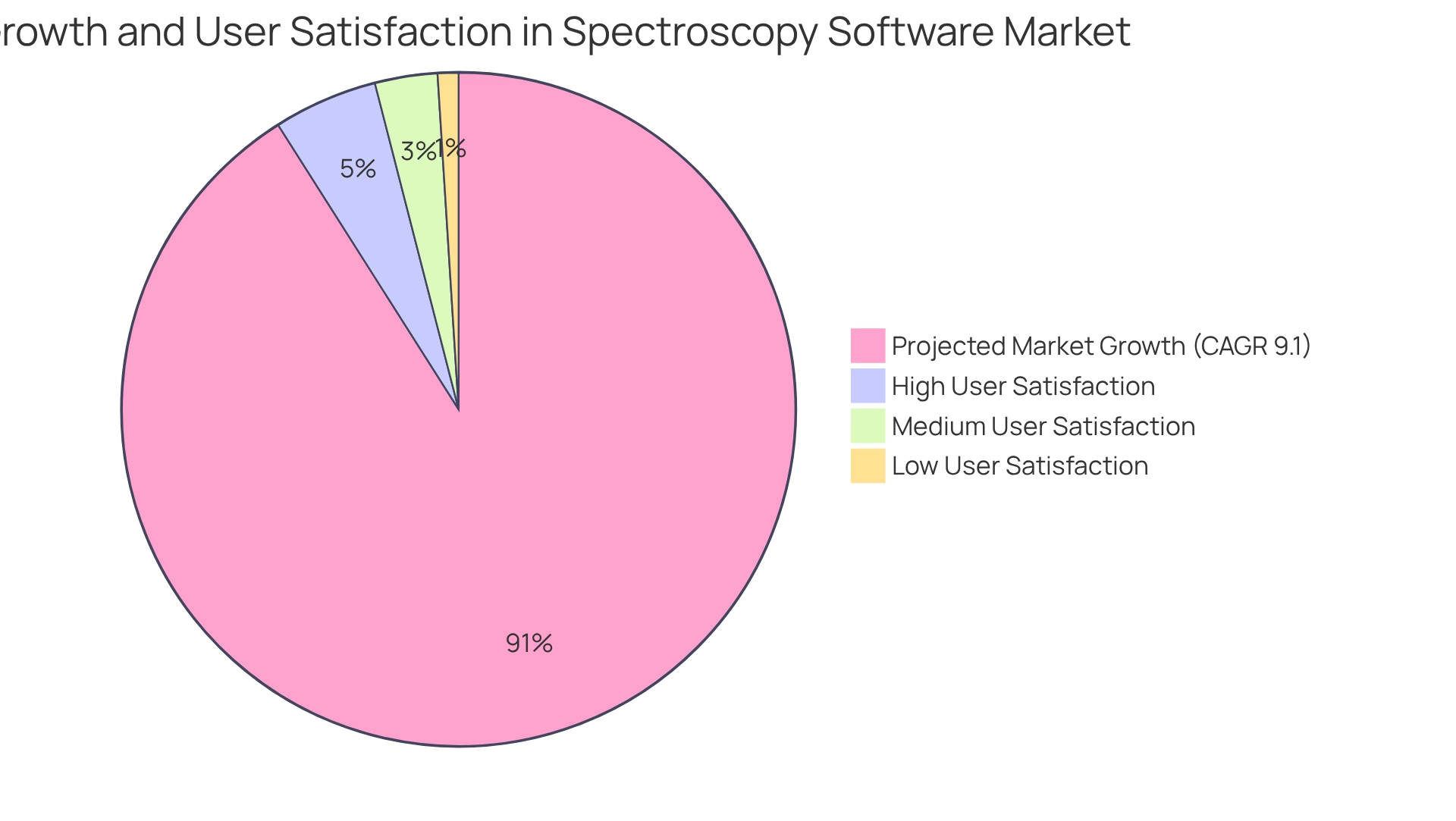
User-Friendly Interface: Enhancing Usability for Operators
The user-friendly interface of the IR spectroscopy machine from JM Science is meticulously crafted to enhance usability for operators across all skill levels. Intuitive controls and clear visual displays facilitate seamless navigation through various functions and settings. This thoughtful design significantly reduces the learning curve, enabling users to operate the equipment efficiently. Consequently, research facilities can maximize productivity and minimize the risk of user errors during analyses.
Research underscores the critical importance of intuitive interfaces in scientific instruments, with studies indicating that 94% of users have rejected websites due to design issues. Furthermore, the financial implications of neglecting user-friendly design are starkly illustrated by Citibank's loss of $500 million in 2021 due to a UX design error. Such figures emphasize the potential expenses linked to inadequate usability in testing equipment. By prioritizing usability and incorporating user testing to understand how various users engage with the IR spectroscopy machine, JM Tech not only enhances operational efficiency but also aids managers in achieving their productivity objectives.
Given that only 68% of internet users aged 18-29 feel very confident using digital devices, it is essential for scientific instruments like the IR spectroscopy machine to effectively address usability challenges. The consequences of can be severe; a case study reveals that 21% of businesses experience poor traffic due to inadequate design. By focusing on user-friendly interfaces, JM enhances the overall user experience, contributing to improved outcomes in laboratory environments.
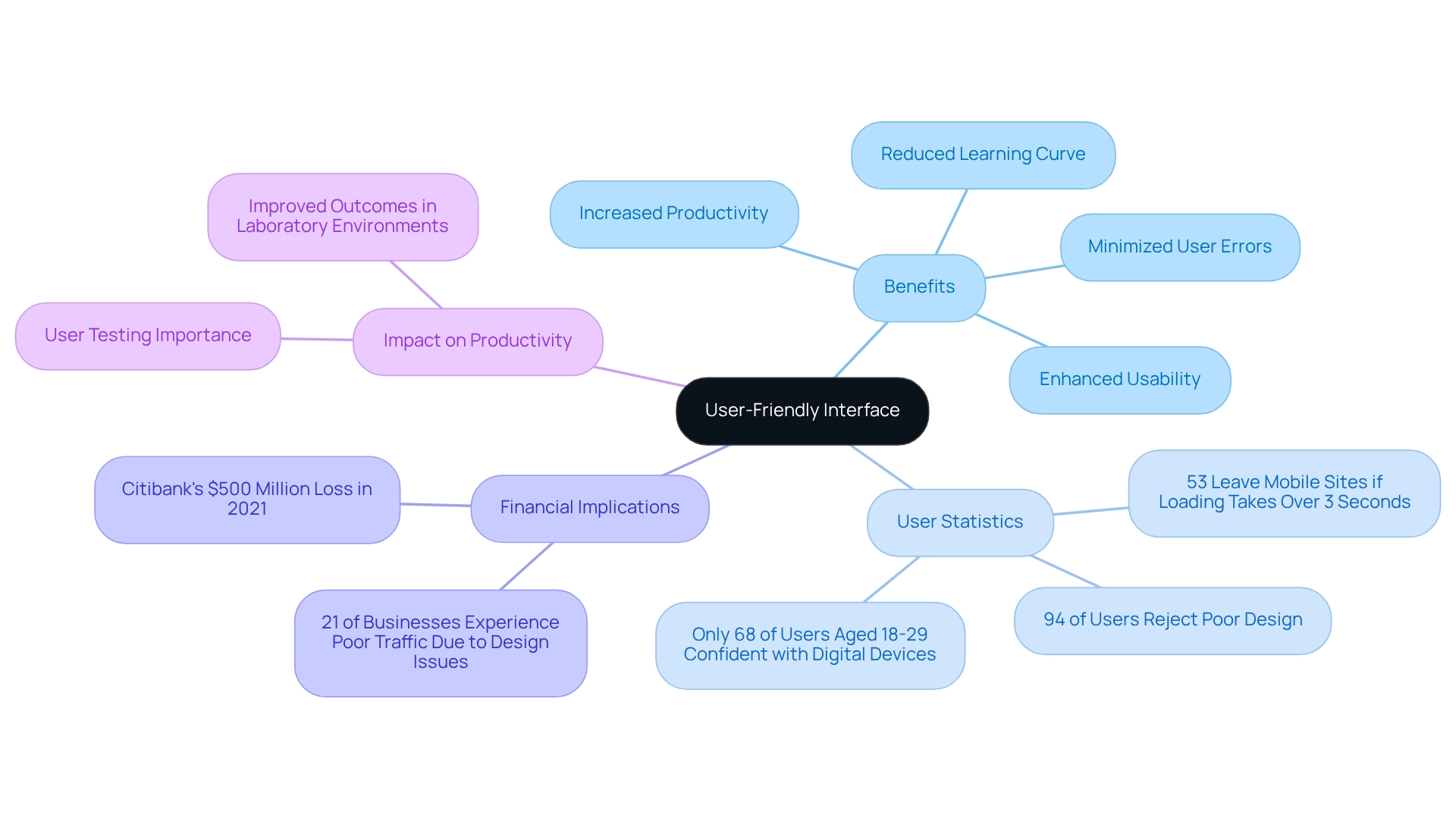
Portability: Facilitating Field Applications of IR Spectroscopy
The JM Science IR spectroscopy machine exemplifies a commitment to portability, making it an ideal choice for field applications. Its compact design and lightweight construction facilitate easy transport, allowing researchers to conduct on-site analyses without sacrificing performance. This capability is crucial in sectors such as environmental monitoring and pharmaceuticals, where timely results are essential.
The demand for portable IR spectroscopy solutions has surged, driven by the need for prompt information collection in diverse settings. For instance, , as described in the case study 'Benefits of the Agilent 4300 Handheld FTIR,' demonstrates how portability can transform on-site analysis, providing quick results and flexibility across different testing tasks. Its lightweight design enables real-time analysis in remote locations, significantly enhancing decision-making and operational efficiency.
Field researchers have observed that portable assessment tools not only streamline workflows but also enhance the precision of data collection in challenging environments. As the landscape of scientific research evolves, the impact of portability on field applications in pharmaceuticals becomes increasingly evident, underscoring the value of compact IR spectroscopy machines in advancing research and healthcare.
Additionally, with other resellers' shipping times varying from 8 to 21 weeks, the immediate availability of portable solutions from industry leaders such as Thermo Fisher Scientific, Analytical Spectral Devices, and Agilent Technologies offers a significant advantage.
As Martin Luther King Jr. famously stated, 'If you can't fly then run, if you can't run then walk, if you can't walk then crawl, but whatever you do, you have to keep moving forward,' emphasizing the necessity of progress in scientific research.
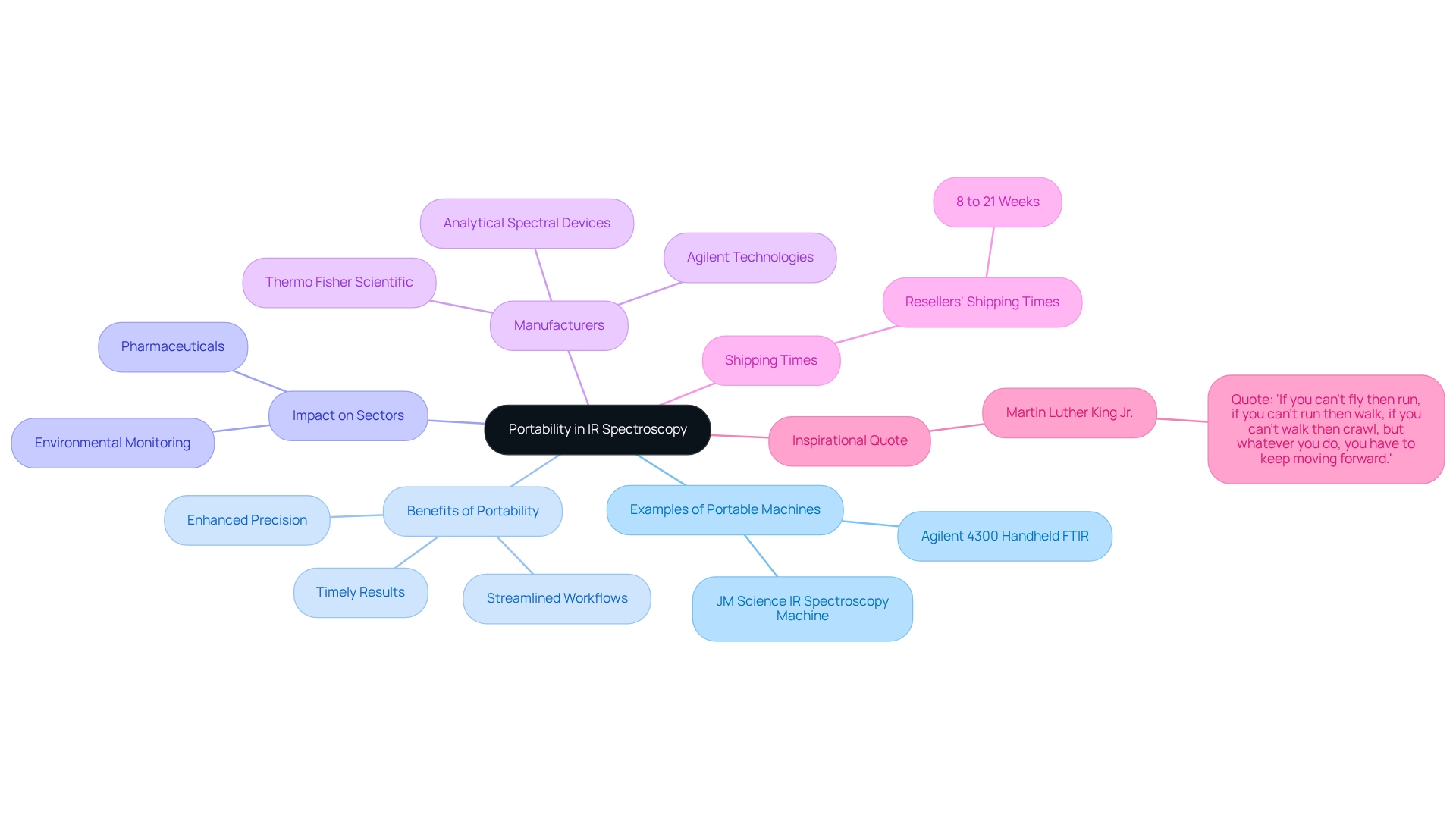
Maintenance and Support Services: Ensuring Long-Term Operational Efficiency
JM Technology offers a comprehensive suite of maintenance and support services for its IR spectroscopy machine, which is essential for ensuring long-term operational efficiency. Routine maintenance checks are not just beneficial; they are integral to extending the lifespan of the equipment and significantly enhancing productivity. Laboratories that adopt regular maintenance can achieve up to a 20% reduction in downtime, facilitating more consistent analytical performance. Additionally, the integration of affordable Computerized Maintenance Management System (CMMS) technology enables teams to realize , effectively streamlining their maintenance processes.
Technical support stands as another pillar of JM Science's offerings. Access to expert troubleshooting support empowers managers to swiftly address issues, thereby minimizing disruptions to workflow. Feedback from facility managers consistently underscores the critical importance of operational efficiency, with many noting a direct correlation between effective maintenance practices and improved output. Furthermore, the significance of support services is paramount; they are vital for the longevity of equipment. For example, case studies illustrate that facilities utilizing comprehensive maintenance programs for their IR spectroscopy machine experience fewer operational disruptions and enhanced reliability in their analytical results. One notable case study showcased a facility that achieved a 30% reduction in equipment failure rates after instituting a structured maintenance schedule. By prioritizing these services, JM Science not only meets the immediate needs of its clients but also cultivates a culture of excellence in laboratory operations, thereby positioning itself competitively against key players such as Agilent Technologies and Thermo Fisher Scientific.
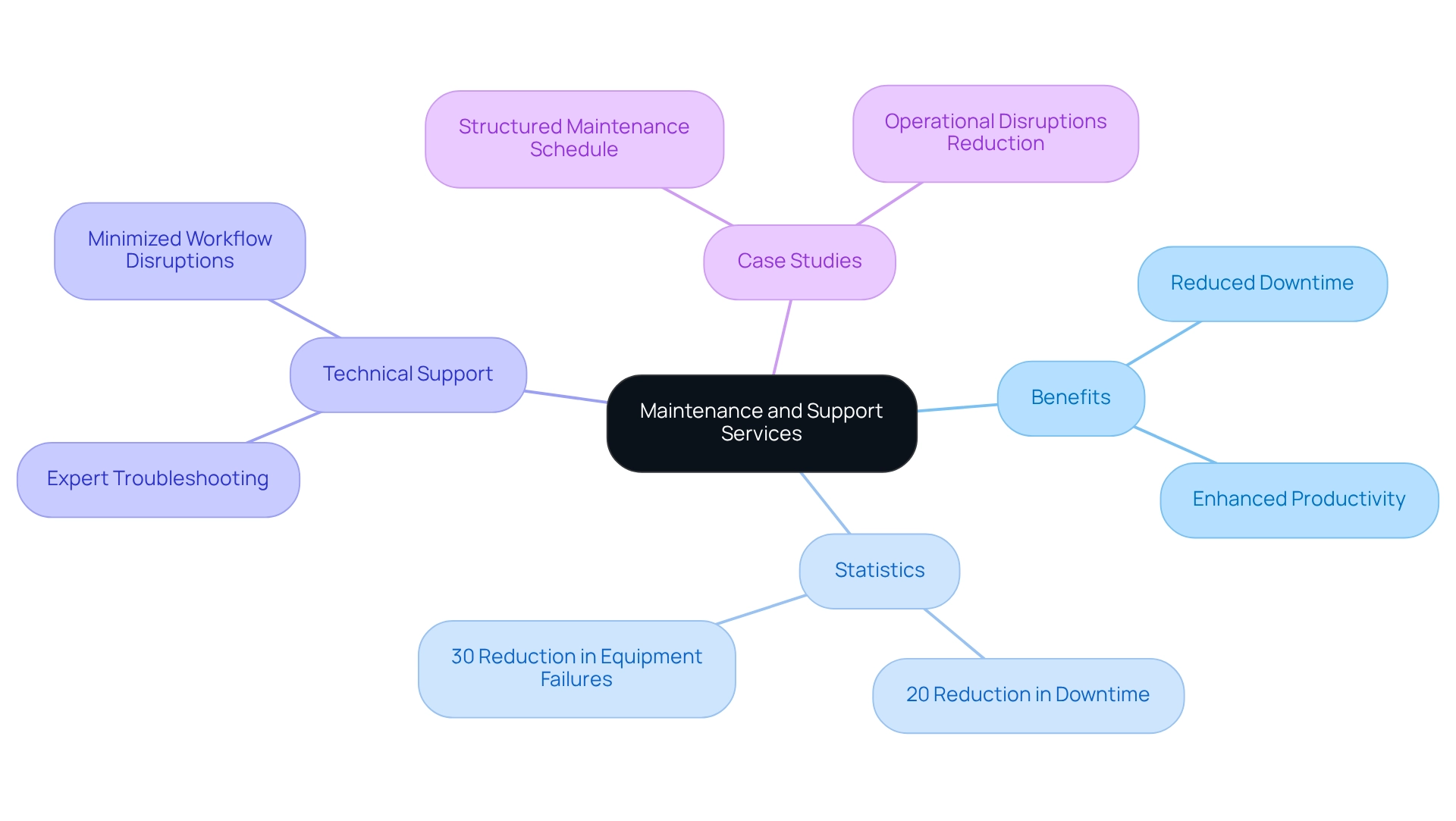
Conclusion
The JM Science IR Spectroscopy Machine represents a pivotal advancement in scientific research, distinguished by its sophisticated capabilities that significantly enhance precision and reliability in molecular structure analysis. Each component of this machine, from its cutting-edge data acquisition system to its adaptable sample interface, is integral to delivering high-resolution spectral data that is crucial for accurate chemical analysis and medical diagnostics.
Moreover, the machine's advanced calibration features combined with its user-friendly interface empower laboratories to uphold measurement integrity while maximizing operational efficiency. In response to the growing demand for portable solutions, the lightweight design of the IR Spectroscopy Machine facilitates effective on-site analyses, establishing it as an indispensable asset across diverse industries, including pharmaceuticals and environmental monitoring.
In a realm where data accuracy and operational excellence are critical, the JM Science IR Spectroscopy Machine emerges as a cornerstone for laboratories committed to achieving the highest standards in research. As the analytical landscape continues to evolve, the ongoing innovations and support services offered by JM Science are poised to empower researchers and elevate the quality of scientific inquiry, ultimately driving advancements in knowledge across multiple disciplines.




